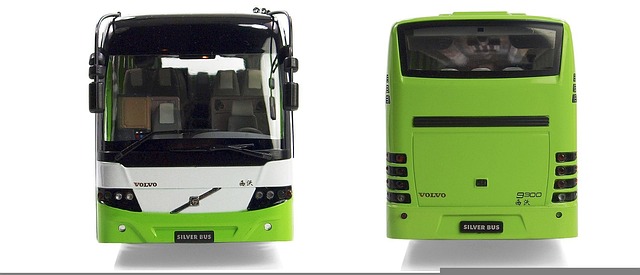Bus delay notifications for Select Buses enhance passenger experiences by providing real-time updates on route changes, disruptions, and delays. These alerts manage expectations, reduce missed connections risks, and improve overall satisfaction, especially for daily commuters and tourists. Advanced technologies like GPS tracking and machine learning enable accurate predictions, while digital displays and mobile apps ensure timely information access. This transforms public transportation, promoting punctuality, efficiency, and inclusivity, ultimately encouraging more people to choose buses as their preferred travel method.
In today’s fast-paced world, efficient public transportation is key. One crucial aspect often overlooked but significantly impacting commuter satisfaction are bus delay notifications. This article explores the importance of timely alerts in navigating urban mobility, from understanding bus delay notifications to the technologies enabling them. We delve into how these notifications enhance passenger experiences, discuss challenges and potential solutions, and conclude with a look at future trends, including real-time tracking on select buses.
- Understanding Bus Delay Notifications
- The Impact of Timely Alerts
- Technologies Enabling Accurate Delays
- Enhancing Passenger Experience
- Challenges and Solutions in Implementation
- Future Trends: Real-Time Tracking
Understanding Bus Delay Notifications

Bus delay notifications are an essential tool for both passengers and transportation authorities. They provide real-time updates on potential delays, allowing passengers to make informed decisions and plan their journeys accordingly. When it comes to understanding these notifications, it’s crucial to know that they are specifically tailored for select buses operating in various routes. These alerts can be triggered by a variety of factors, such as traffic congestion, mechanical issues, or even group bus bookings that may require additional time to load and unload passengers.
For those planning bus tours to mountains or other destinations with limited parking spaces (no-park zones for buses), delay notifications are particularly valuable. They help manage expectations and reduce the risk of missing connections. Moreover, many modern buses offer comfy seating arrangements designed to enhance passenger experience during delays. By integrating these features, transportation services ensure that even amidst potential setbacks, riders remain comfortable and informed.
The Impact of Timely Alerts

Timely bus delay notifications significantly enhance passenger experiences and satisfaction. When public transportation systems implement effective alert mechanisms, users benefit from real-time updates on route changes, service disruptions, or delays. This is particularly crucial for frequent commuters and those relying on select buses for their daily travel, such as senior citizens using transport services designed specifically for them.
Moreover, these alerts play a vital role in specialised bus services like hop-on hop-off routes to airports or nature tourism buses. Tourists and business travellers alike can stay informed about potential delays, ensuring they reach their destinations on time. Efficient delay notifications contribute to the overall efficiency of bus operations, fostering a positive image of public transportation as reliable and responsive.
Technologies Enabling Accurate Delays

The digital revolution has brought about significant advancements in how public transport systems operate, particularly when it comes to providing accurate and timely delay notifications for bus services. Technologies such as GPS tracking, real-time data analysis, and machine learning algorithms play a pivotal role in ensuring passengers receive up-to-date information. By integrating these innovations, transportation authorities can accurately predict delays, especially on routes with complex schedules or specific challenges like airport bus reservations and parking regulations.
Additionally, the use of smart infrastructure and connected devices enables efficient communication between buses, control centers, and passengers. This interconnectedness allows for dynamic routing adjustments, quick response to unforeseen events, and better overall management of bus fleets. As a result, travelers can benefit from improved travel experiences, including more reliable journey times, especially when utilizing budget-friendly travel options like airport shuttle buses and other public transport alternatives.
Enhancing Passenger Experience

In today’s digital era, enhancing passenger experience on public transportation has become a top priority for transit authorities and service providers. One innovative approach that significantly improves this aspect is the implementation of bus delay notifications, especially when utilizing Select Buses. By providing real-time updates on bus locations and estimated arrival times at specific stops, passengers can bid farewell to uncertainty and unpredictable delays. This not only fosters convenience but also boosts passenger satisfaction, encouraging more people to opt for buses as their primary mode of transport.
Additionally, the integration of delay notifications with other features like customized school bus bodies or affordable bus designs (bus stop design) and timely bus timetables can create a seamless travel experience. Such initiatives ensure that passengers are well-informed, safe, and satisfied during their commute, ultimately encouraging a more sustainable and efficient transportation system.
Challenges and Solutions in Implementation

Implementing effective bus delay notification systems presents several challenges. One significant hurdle is ensuring real-time data accuracy across diverse transportation networks. With various factors influencing punctuality, from traffic congestion on city streets to unforeseen mechanical issues, providing timely and precise updates can be complex. Moreover, integrating these notifications into existing infrastructure requires careful planning, especially when considering the variability of bus schedules on routes like airport shuttles or intercity services.
However, solutions are emerging. Advanced technologies, such as GPS tracking and predictive analytics, offer promising avenues for tackling these challenges. By leveraging select buses equipped with these tools, transportation authorities can gather real-time data, enabling them to accurately anticipate delays and promptly notify passengers across various platforms, including mobile apps and digital displays at bus stops. This approach is particularly beneficial for nature tourism buses and intercity bus routes, where punctuality is crucial for passenger satisfaction and efficient trip planning.
Future Trends: Real-Time Tracking

As technology continues to advance, one area that’s seeing significant development is real-time tracking for public transport options. This trend promises to revolutionize how passengers interact with select buses, providing them with accurate and up-to-the-minute information on their journey. With real-time tracking, commuters can say goodbye to the uncertainty of waiting at bus stops, hoping for a timely arrival. Instead, they’ll have access to dynamic data that shows exactly where each bus is and how much time it has until it reaches its next stop.
This innovation not only enhances passenger experience but also contributes to more efficient fleet management. By monitoring the location and movement of buses in real-time, transport authorities can optimize routes, reduce delays, and ensure better adherence to schedules. Moreover, this technology enables passengers with mobility concerns or those traveling with pets (following dog-on-board policies) to plan their trips with greater ease, knowing precisely when their bus will arrive. And for budget-conscious travelers, real-time tracking could also lead to more transparent pricing and even discounted bus fares, making public transport options even more appealing.
Bus delay notifications have evolved from mere announcements to powerful tools enhancing passenger experiences. By leveraging technologies like real-time tracking, transport authorities can provide accurate, timely alerts through select buses, minimizing disruption and maximizing efficiency. While implementation faces challenges, continuous innovation and thoughtful solutions ensure a smoother journey for all. Looking ahead, real-time tracking promises an even more connected and informed future for public transportation.
